Selection Testing for the Police Service Dog
What do the Police Really Look for in a Dog?
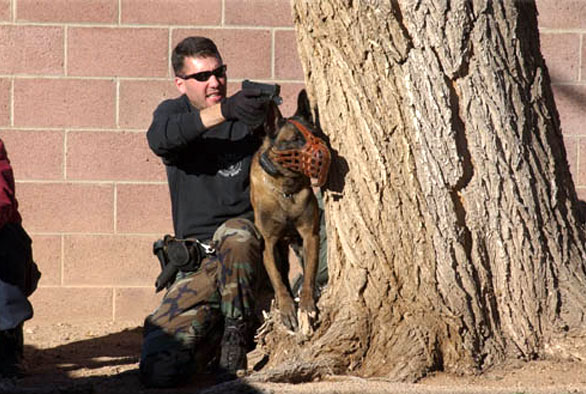
Foreword by Ed Frawley
I met Kevin Sheldahl in 1984 at a police K-9 school in Kansas. We have been good friends ever since. Kevin is a retired police K-9 handler. He became a K-9 Instructor and an International Police Dog Judge. Kevin's company K-9 Services runs 6-week police K-9 courses in which police officers learn how to become new K-9 handlers. To date, he has run 70 6-week courses and trained over 1,200 K-9 handlers. I don't know of another dog trainer that has Kevin's experience and knowledge of police service dogs training.
One of the greatest challenges in functioning as a police service dog instructor for my agency as well as a variety of others is the search for quality police service dog candidates among the numerous animals offered for sale both in the US and abroad. I am continually asked what it is I see and look for in a potential PSD.
Like many aspects of the canine world there are a variety of answers to this question and just as many perspectives into those answers as there are people involved in the process. To narrow down the scope of this article, lets say that we are looking for the general purpose patrol dog whose certification and deployment will follow guidelines that are familiar throughout Germany, the United States, and numerous other countries.
Now, the sport enthusiast will immediately see the WPO routine as a standard familiar in many ways to Schutzhund. I must caution the reader to remember that, like Schutzhund, the WPO is a choreographed event that is sport in nature. The character traits that are necessary for a highly functional PSD on the street can often be found in dogs whose WPO performance would be less than "sporty" and may be at the bottom of the acceptable limit in the high scoring WPO competitor. The converse may also be true. Simply put sport performance does not always represent the best character traits for service dog selection. Before sparks fly due to such a statement the reader must understand that this is not a condemnation of the WPO competitor, just the opposite. It takes a tremendous amount of dedication from the handler and excellent temperament from a dog to work both in the street arena and the competition format. So, from this pool of dogs capable of apprehension at some level, what do you look for in a street working dog candidate?
In searching for a service dog candidate, there have been many tests forwarded to separate those that can from those that definitely won't do the work. In between are those dogs that, with very correct work and correct handling can do the work but may either not be appropriate for the handler, the environment, or the instruction available. It is in understanding the application intended for a particular candidate that a skilled evaluator must make decisions as to include or exclude a particular candidate. This results in a broad interpretation of the results of any selection test. The following is a test that I have found useful for my environment and the training that the dog will receive. For the sport enthusiast I hope this will be of interest and maybe even of some utility in understanding the needs of law enforcement.
Selection Testing for the Service Dog
Of utmost importance in the development of the Service Dog candidate is that the individual dog be evaluated for inclusion into a program. An understanding of behavior of the Service Dog is necessary to make the evaluation as well as experience in training and selecting dogs for potential use as Service Dogs. There are many ideas about selection testing and many are valid. Often an experienced evaluator may spend only a short time with the dog to determine whether it is appropriate. To carry a test too far when the outcome of the test is obvious may dissuade the owner from disposing of the dog as he/she observes the results of the test. To continue to carry out a test where the result is completely negative is not only a waste of time but also a potentially damaging experience for the dog. The evaluator must also be cognizant of the dog's owner. A self-righteous attitude or conducting the test without concerns for the owner will most certainly meet the dog or the owner with hostility and rightfully so. Also be aware that the seller may have more experience than the evaluator which can be used to either benefit the evaluator or to obscure the results of the tests.
While preparing to run the formal tests on the prospect the evaluator must first have some information from which to begin. The age of the dog will determine to an extent the performance of the dog. To expect a ten-month-old puppy to complete these tests would normally be ludicrous as well as potentially damaging to a dog, which could mature to be a fully capable Service Dog candidate. These exams have been developed for evaluating the dog, which has had some pre-training. Normally this is a dog, which comes from a sport dog club.
Testing should occur in a neutral environment for the dog. It should not be done at a sport-training field. A good location is a park or other area with cover. It should be a location that the dog has not been before. Upon arrival take a few minutes to have the handler walk off and play with his dog. Observe the way the dog reacts to play and to his new environment. Is the dog comfortable and ready to play or is it concerned about it's new surroundings and won't play because it is suspicious. Will the dog explore without its handler? Or does it not wish to be away from his handler's support in this new place? Ideally the dog will be alert and curious, willing to explore its new environment but also checks up on his handler. When the handler initiates play the dog should gladly participate. If other people walk through the area he should be aware of their presence and even wish to investigate. If a stranger walks up to the handler does the dog come to investigate or does he not notice? If the dog comes to the handler while in conversation with a stranger what does the dog do?
Ideally the dog should be curious and interested in these events. Warning signs about problem temperament are excessive sharpness in the new environment, unwillingness to play with the handler, unwillingness to explore, or completely unaware of humans within the environment. These informal observations are quite important, as they will also tell you about the dog's socialization, relationship with the handler (pack and play drives, submissive drive, and rank drive). If this dog is being brokered through an individual other than the handler many of these observations will tell the evaluator about the dogs ability to adapt to a new handler.
Next formal testing will begin. It is important that the owner of the dog be informed about the tests. It is also important that the decoy being used be experienced in training all phases of Service Dog work and have an understanding of how to instantly recover the dog if placed in a situation which the dog has problems. You would not go test drive a car and wreck it hand it back to the seller and say "I don't think this is the car for me I wrecked it too easily". If in the future this person wishes to sell a dog you can be sure that you won't be allowed to evaluate it and quite probably won't even be offered the opportunity to purchase another.
Test #1: Stake out
Place the dog on a 6-8' cable on a tree or post. Do not use a solid backstop. Allow the dog to stay on the stake out for: 5-10 minutes alone. Observe his behavior, it should be curious and attentive. After a while a stranger (decoy) should walk towards the dog making strong eye contact and moving in a oncoming but left to right pattern. Each time the decoy changes direction he may pause and face the dog with additional strong eye contact. The decoy should be carrying something odd such as a bucket or a leafy tree branch just to attract attention. The decoy must advance upon the prospect in a zigzag pattern pausing occasionally and making strong direct eye contact with the dog. Observe the dog's reaction as the decoy presses closer and closer in a slow irregular pattern. Does the dog become attentive and alert at first? Or does he simply ignore the situation? When does the dog show behaviors in an attempt to thwart a threat? Does the dog initiate a challenge? Does he show play or submissive behavior solicitations? When does survival drive manifest and in what way does it appear? All these observations are taken not as a pass fail type of test but as information about the temperament of the candidate. Immediately move to test number two.
Test #2: Pursuit and search
Immediately after the first test the dog who is to continue testing shall be removed from the stake out and held by the collar as a decoy in a suit appears at a small wooded area in the distance (100 yards or so) he shall be dressed in a protection suit. The decoy shall attract the dog's attention and run for 15-20 yards in the direction of the dog still attracting attention. The decoy shall then run away and out of sight. After about: 45 seconds to 1 minute the handler will be instructed to let the dog go. The dog should search either by air scent or ground scent for the decoy. The decoy shall be crouched in a hiding position out of sight. The dog should show great intensity to search and be able to locate the decoy with no encouragement or assistance from the handler who should stay back and not interfere with the dog. Once found the dog should either engage the decoy or bark with great enthusiasm. The dog should not leave the man once he is located. Immediately move to test number three.
Test #3: Muzzle
The dog should be placed in a comfortable agitation style muzzle and fit and security should be checked. The decoy, no longer in a suit shall approach the dog with a stick in hand while the handler holds the dog on a short lead (6'). The decoy must attract attention to him and when the dog is alert attack the handler. The dog should respond by engaging in strong combat (if the dog is concerned about the muzzle he must still engage in combat. The desire to remove the muzzle must not be judged too harshly as long as the dog still shows the desire to engage in combat and pursue. Immediately after the dog begins to show a strong desire to fight the decoy should flee. As the decoy gets 20-30 paces away the handler should be instructed to release the dog. Once the dog again makes contact with the decoy who is trying to elude him the decoy will turn toward the dog briefly and strike him once or twice on the less sensitive part of his body with a flexible stick once or twice. The dog should not be thwarted by these assaults and ideally should show an escalation of combat behaviors. The experienced evaluator will be able to evaluate these behaviors even in the dog that shows sensitivity to the muzzle and tries to fight to remove the muzzle. This test may be repeated in a suit for the dog who is intensely muzzle sensitive, in this instance the quality of the grip and purposefulness of the fight must be closely examined.
Test #4: Tracking
Take the dog to a lush field where a persons passage through the vegetation can be readily seen. Have a subject who is carrying some form of discrete protection equipment cross the field in such a manner as to prevent the dog from approaching from down wind. The decoy should make a large and intense disturbance by scuffling of the feet, spitting in his path and moving slowly through the field as the dog observes from a good distance. The decoy should then continue out of sight of the dog and the dog placed out of sight. After the decoy has hidden after traveling 300 or so paces bring the dog back into the field. The handler should then be instructed to leave the dog on lead until they enter the field. Once in the field instruct the handler to remove the lead and encourage his dog to search briefly. The handler should move to the area where the track crosses the field at a right angle to the path of the decoy. When the dog reaches the area of the path he should display interest in following the path purely out of curiosity. If the dog does so, the handler should say nothing to distract the dog merely follow him. Ideally the dog will gain in his attention to the path and follow it. Some breaking of attention is acceptable. If the dog does poorly on this test repeat the test with the handler as the track layer and the evaluator as the handler (in the case of dogs with no formal training in any style of tracking the evaluator may elect to begin with the handler as the track layer).
Test #5: Play
Have the handler play tug-of-war with the dog with a rolled up towel. If the dog plays with the handler will he play with a stranger? Once the dog is enjoying the game will he search for his toy when thrown out of sight? How long will he search for the missing toy? Will the dog initiate play with his handler or others?
The selection tests must be viewed as an opportunity to view the dogs potential and must be weighed in respect to the dog's previous training if any. The dog must be at an acceptable level of maturity to undergo the full onslaught of the tests. The more immature and/or untrained the dog is the less intense the examination must be. To assume that naive dog can perform at the level that a SchH III dog has the potential to on these examinations defeats the purpose. To accept the level of a good naive dog's performance from a SchH III would be disastrous. Experience in evaluating dogs is an absolute necessity prior to applying these tests.
Test #6: Gunfire
In this test a .38 cal. Handgun or equivalent is used with blanks. The handler is asked to walk away from the evaluator with the dog and may play with the dog. 4 to 6 rounds are discharged from the handgun slowly. The dog should not shy away or appear spooked by the sound. Barking is acceptable as long as the dog's demeanor shows that it is not barking from fear or survival drives. The dog should be able to play immediately after the gunfire (if the dog stays focused on the evaluator after the gun shots and will not play have the handler walk away to another location to play).
Conclusion
Once the dog is accepted for training continual evaluation of his progress will begin. The selection test does not guarantee success and the possibility of discontinuing the work should always be considered for any dramatic problems which do not respond to training and which could pose safety concerns and performance concerns for critical tasks.




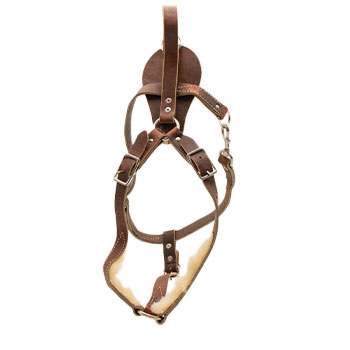
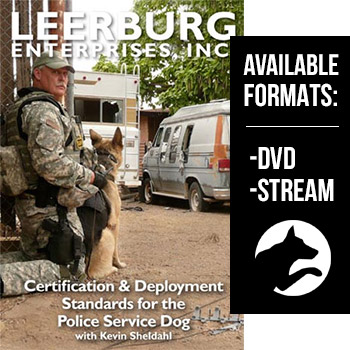
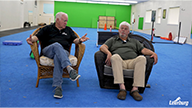
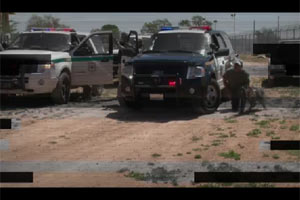
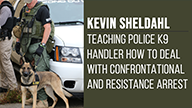
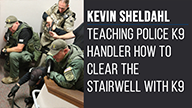
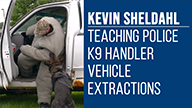
Ask Cindy.